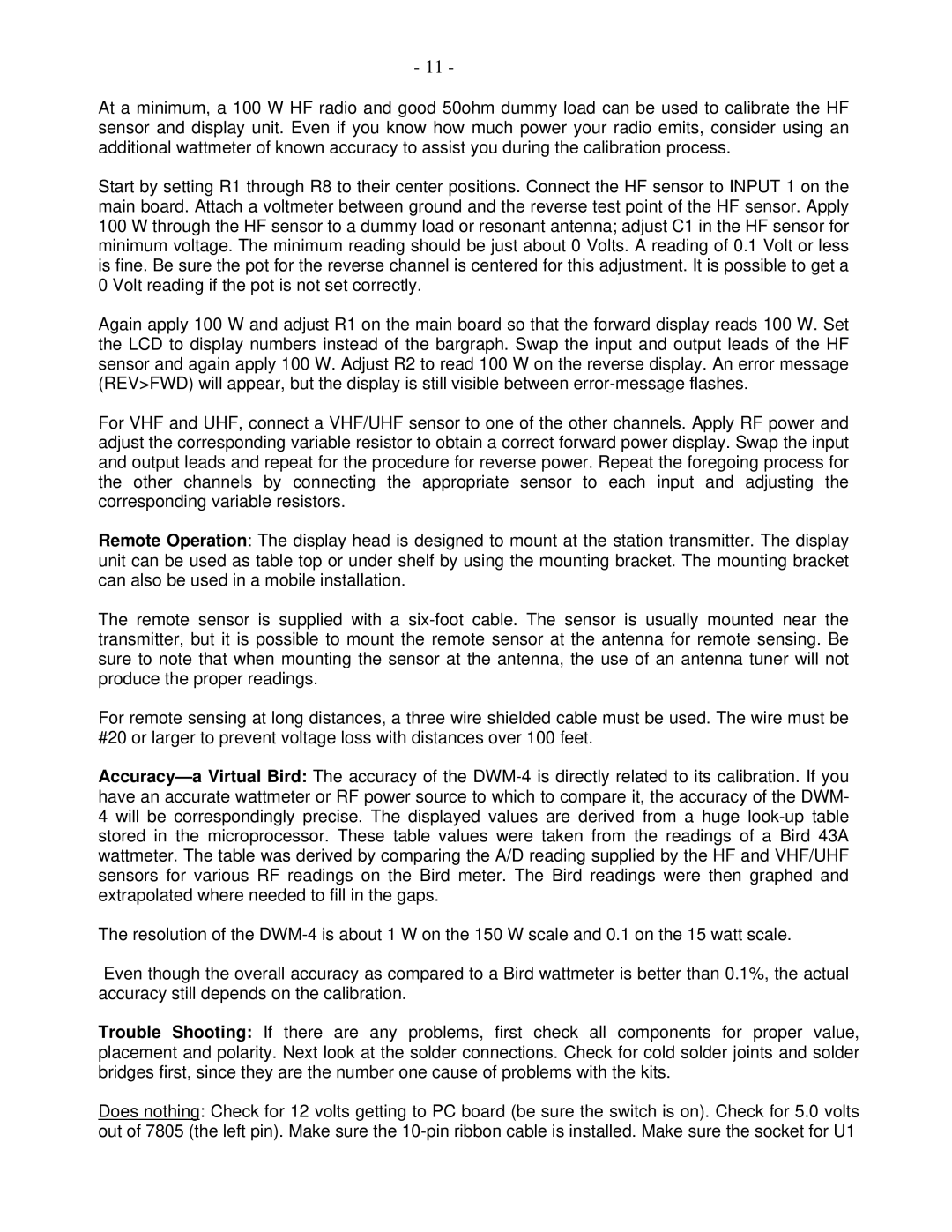DWM-4 specifications
The Macsense Connectivity DWM-4 is a highly versatile and robust wireless module designed for seamless connectivity in various applications. Tailored for industries and systems requiring reliable data transmission, this device combines advanced technology with user-friendly features to ensure a superb performance.One of the standout features of the DWM-4 is its support for multiple wireless standards, providing compatibility across a range of protocols. It is designed to operate on both Wi-Fi and Bluetooth networks, making it an excellent choice for a variety of devices, from IoT products to industrial machinery. This hybrid connectivity ensures that the DWM-4 can adapt to different communication requirements, improving flexibility and user experience.
The DWM-4 boasts a compact design, which is essential for applications where space is at a premium. Its lightweight structure enables easy integration into diverse setups, minimizing the need for extensive modifications or adjustments. Moreover, the module is built to withstand challenging environmental conditions, making it suitable for outdoor and industrial applications.
Featuring low power consumption, the DWM-4 is engineered to prolong battery life in portable devices, a critical factor for users concerned about energy efficiency. This focus on energy conservation allows developers to create products that operate longer without frequent recharging, enhancing usability and customer satisfaction.
In terms of security, the DWM-4 implements robust encryption protocols, safeguarding data transmissions against unauthorized access. Its advanced security features are crucial for industries where data integrity is paramount, such as healthcare and finance.
Ease of use is another hallmark of the DWM-4. With an intuitive interface and comprehensive documentation, developers can quickly set up and configure the module, simplifying the integration process. Additionally, the device is supported by a community of users and developers, ensuring that assistance and resources are readily available.
In conclusion, the Macsense Connectivity DWM-4 stands out as a powerful and adaptable wireless module well-suited for modern applications. Its ability to support multiple wireless technologies, coupled with its compact design, low power consumption, security features, and ease of use, makes it an ideal choice for developers looking to enhance connectivity in their projects. Whether for industrial use or consumer products, the DWM-4 is poised to deliver reliable and efficient performance in a wide range of scenarios.
